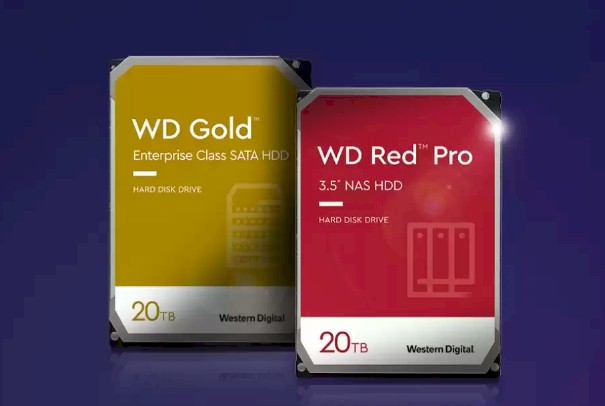
After almost two years with data storage giant Western Digital, Ashley Gorakhpurwalla is getting used to the questions. They tend to boil down to the same query: “Why are you talking about hard drives? I thought hard drives were dead.”
“I get that probably three years ago it was pretty a legitimate question for people to ask relative to how we consume technology,” Gorakhpurwalla, executive vice president and general manager of WD’s HDD business unit, tells The Next Platform. “We all consume technology somehow and we’re highly biased towards devices. But the hard drive really isn’t showing up in your thin MacBooks or your Windows devices or Chromebooks or, say, set-top boxes. Maybe in your desktop. Maybe there’s one backing up something in your closet. But when people think storage device, personal data, digital data, video, they see what they see.”
What they see is only a small part of the picture, he says. While hard drives are declining as a storage medium in client devices, the real action is taking place in datacenters, driven by the increasingly massive amounts of data being created and the accelerating growth of hyperscalers like Amazon Web Services, Microsoft, Facebook, Google, and Tencent as well as other cloud players. Enterprise spending on cloud infrastructure services reached almost $53 billion in the first quarter, a 34 percent year-over-year increase and the 11th time in 12 quarters that the growth rate was between 34 percent and 40 percent, according to Synergy Research Group.
On the data front, a report by WD rival Seagate and IDC is forecasting that global data generation will grow from 33 ZB in 2018 to almost 176 ZB in 2025. Meanwhile, enterprises are telling WD that their data storage capacity needs will grow 25 percent to 30 percent annually for at least the next several years, Gorakhpurwalla says.
“Betting against data creation seems like a foolish bet,” he says. “There’s probably no end to data creation. If innovation can’t keep up, we’ll start to change the nature of how people think about data growth or data usage.”
The big three hard drive makers – WD, Seagate, and Toshiba – are all leaning heavily on innovation as they look to push capacity to the 30 TB level and increase areal density. For Seagate, that means developing HAMR (heat-assisted magnetic recording) to help grow the number of bits on a disk platter by heating the media before data is recorded. There also is dual actuator technology for improving read/write performance.
Toshiba is pushing microwave-assisted magnetic recording, or MAMR, a technology that will play in its 20 TB drive this year and bring it to at least 26 TB.
Meanwhile, WD’s technology was put on display in May, when the company introduced its 22 TB and 26 TB UltraSMR HDDs, which contain the vendor’s year-old OptiNAND architecture, which integrates an embedded INAND UFS flash drive on the hard drive’s mainboard. The systems also include energy-assisted PMR (ePMR), triple-stage actuator (TSA), HelioSeal – which replaces the air inside a disk with helium to improve performance, efficiency, and capacity – and UltraSMR, new technology with large block encoding and an advanced error correction algorithm that increases tracks-per-inch and drives higher capacity in the drives.
“Capacity’s still king, so we do need to be able to deliver for our cloud customers and our OEM customers,” Gorakhpurwalla says. “Our roadmap of putting a 22 TB and 26 TB drive into the marketplace is pretty exciting. Our industry has a history based on the fact that it takes quite a while to develop some of these technologies and they’re fundamental material science. It can take a decade. It can take two decades in some cases. We do have a history of letting customers and others in the ecosystem know about things before they’re ready. What the new drives did is they showed how innovation across all the vectors is important: Recording physics with energy assist, recording format with UltraSMR, and then it’s built on a Western Digital’s innovation of HelioSeal.”
More capacity not only enables enterprises to better handle the onslaught of data, but it also means that they will be able to save more data. He estimates that as much as 95 percent of data is thrown away every year. Not all of that is valuable, but much is. If new innovations means being able to save even 5 percent more data, than organizations have doubled what they’ve been able to keep, he says.
All this comes in a fast-evolving storage market. For several years, industry observers predicted that flash and solid-state drives (SSDs) – with their higher performance for modern workloads like artificial intelligence and 5G – would squeeze out hard drives, particularly as the price continues to drop, coming more in line with that of HDDs.
However, hard drives continue to see demand. According to IDC, global HDD petabyte shipments will grow annually an average of 18.5 percent through 2025 and average capacity per drive will jump 25.5 percent a year. Demand from both OEMs, who build machines for enterprises, and hyperscalers and cloud builders, who design their own gear and contract manufacturing out to ODMs, will also continue to increase.
In addition, if organizations are going to be able to leverage the data that’s coming in, it’s going to take innovation around flash, disk, and tape to do it, says Gorakhpurwalla, who came to WD in 2020 after almost 20 years at Dell, where he last held the position of president and general manager of server and infrastructure systems. In datacenters, about 5 percent to 15 percent of capacity is flash, but the remaining 85 percent to 95 percent is hard drives and sometimes tape.
There are even tiers within those tiers, he says. Looking at flash, there is fast and medium flash, with innovation coming through QLC and other technologies. With HDDs, there are technologies like OptiNAND, HAMR and multi actuators, with the sweet spot being conventional mechanical recording. Eventually hard drives will move down the ladder, closer to tape.
“There’s not an either-or because if you’re going to grow the market and the data sphere by 30 percent or 25 percent a year, all of those mediums need to grow going forward,” he says. “The tiering actually becomes more discrete. Now customers talk about, ‘I need a very, very low-latency, very high-performance layer at the top when a person hits the play button on this video. We need to serve up that commercial pretty quick.’ But in the in the background, you start to get the first part of the video off of a hard drive and if no one’s ever seen that before, if it’s got one ‘like’ in its entire life, I might have to go back to tape.”
Western Digital also is looking to grow its custom business. For a long time, the primary consumers of HDDs were OEMs, value-added resellers (VARs) and distributors, who integrated the storage into their systems that were sold to other large companies. The hard drives were commodities. However, the rise of hyperscalers and cloud providers diversified the industry, bringing in companies that consumed the technology themselves rather than resell it.
“If you think about an OEM customer, they need the latest and greatest technology, the best capacity,” Gorakhpurwalla says. “It’s got to be compatible, it’s got to fit, it’s got to be highly qualified against many, many different sort of environments, applications and software. A very large at-scale customer may have very, very different needs because they actually run the gear. They may have hundreds of thousands and, in several cases, there are millions of drives. They also typically own or develop their own software stack and they have at-scale needs. We need to serve both of those communities equally well.”
Those hyperscalers, because they use the hard drives and develop their own software – all at scale – they are more likely to look to WD product drives that better fit their environments. They also may be more willing to embrace tradeoffs, like more capacity at a sacrifice of some performance. Western Digital is in the early stages of its custom work, he says.
“Before it was super important that you be compatible because I needed it to fit across my entire portfolio, qualify once, work with any software,” he says. “Once I resold it, I didn’t have the ability to go back out and work with it, so it had to work with every Windows operating system or every Linux operating system. Now someone can say, ‘For me, it’s more important that we do it a slightly different way. It’s a closed system, so let’s make closed-system customizations on my behalf.’ But ten years ago, the scale didn’t exist in those customers to be able to accept that because we’re not making one or two when we do this, we’re making thousands, perhaps even millions over a lifetime of these customizations.”
All this work comes as Western Digital executives map out the company’s future. Activist investor Elliott Management – which accumulated a $1 billion investment in WD, holding 6 percent of the stock – has been pressing management to spinning off its flash and hard drive businesses, a move that chief executive officer David Goeckeler said earlier this month the company will investigate along with other options.
Editor’s Note About The Title: “The reports of my death are greatly exaggerated” – Mark Twain.

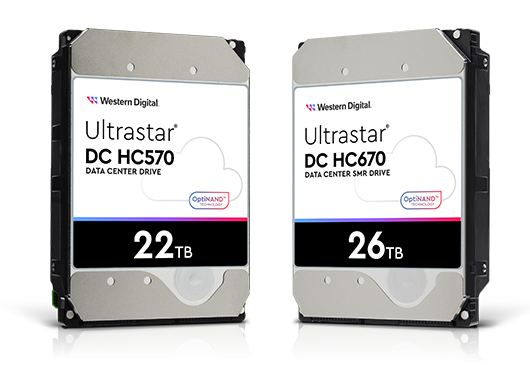
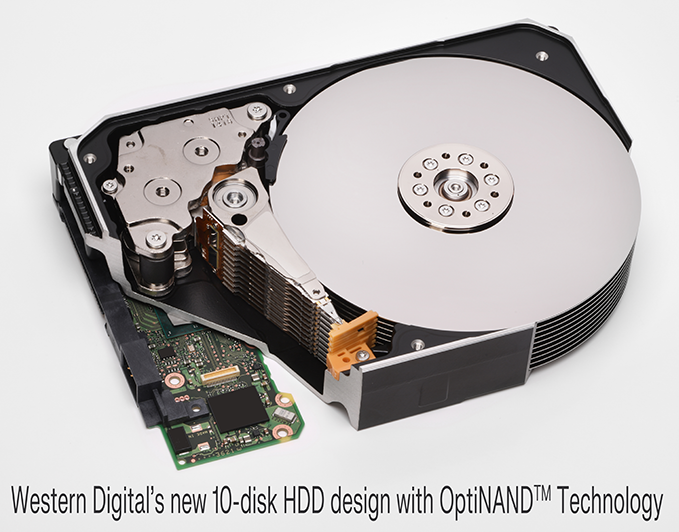

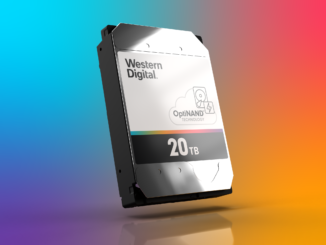
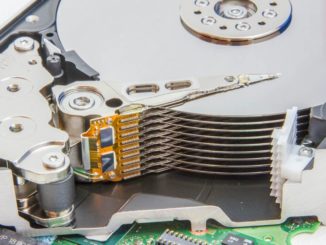
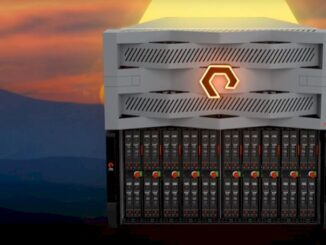
Pushing 10000
Hard drive one computer last a 35 years compssivey level
Hard drives are still great … sort of…but their achilles heel is their read/write speed. I happen to use 18tb drives regularly and I can tell you that to write a full drive takes more than a day … yes more than 24 hrs of continuous writing at full speed (incidentally which varies a LOT over the full drive capacity. That’s simply too long. Perhaps new writing technologies, more heads, etc., will improve upon these results. But unless they improve on this, hard drives will, most assuredly, fall by the wayside.
Try leaving data on an unpowered SSD for 12 months and see what happens. Magnetic disk’s are not disappearing any time soon.
? This is a myth that unpowered SSD would lose data. In fact, the risk of data loss is the other way around (regardless of powered or not). The drawback of SSD is mainly the R/W cycle limitations. For read-only or read-mainly applications, SSDs always trump HDDs but for file_size/dollar.
It works just fine. What’s your point?
I think that was the point.
Yes writing speed it’s a big problem. But the storage let’s say for a video event, for me it’s bigger than 1.5 tb. For each weekend. Ssd is very helpful for editing. But for storage, traditional hdd is the key.
SSD is a real mixed bag. Yes, readback is great due to no latency due to head seeks and rotation, but when the smallest block size is 1 MB or larger, writing to small files incurs a huge amount of overhead.
And then there’s the limit of about 10,000 writes per block before the data bit transistors start going bad. HDD has no such issues.